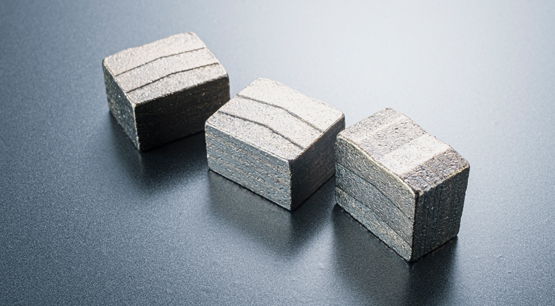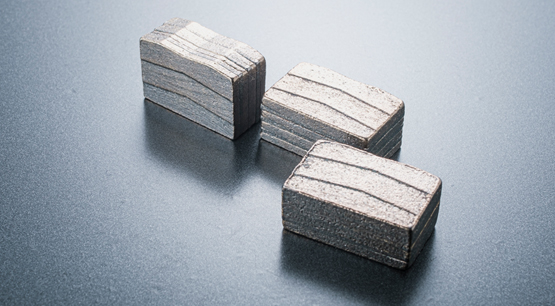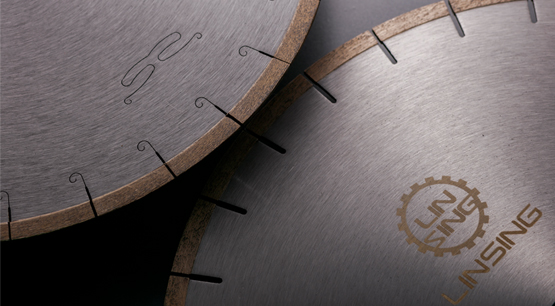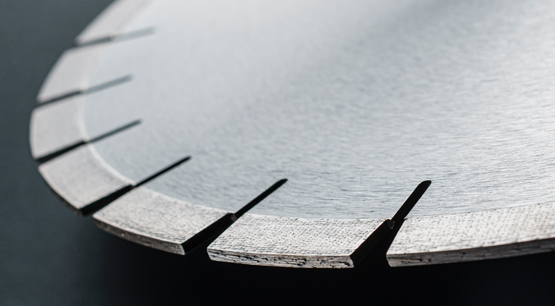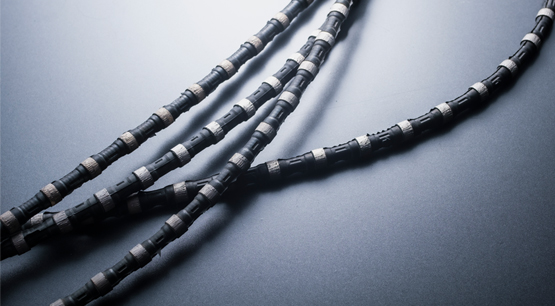There are many steps in the production of diamond wire saws, mainly because the wire saw will go through a lot of forming processes from raw materials to finished products.
1: Formula design and raw material preparation
The formula design work is mainly determined by the diamond manufacturer and the matrix alloy powder matched. If you cut hard granite, it will be better to choose a higher quality diamond, while the cutting is softer. The selected diamond grade does not need to be too high, moderate or low quality can meet the cutting requirements, and then according to the selected diamond, choose and match the appropriate metal powder matrix, and the formulation of the formula is completed. . (Note: The formulation of diamond wire saws takes a long time, and requires a very high understanding and cognition of the overall material and subsequent processes.) As for purchasing raw materials, there are many choices for single diamond. The following table:
| Manufacture | Code |
| South Africa | SDB1125,SDB1100,SDB1085,SDB1080,SDB1075 |
| Korea Iljim | ISD1750,ISD1700,ISD1650,ISD1550 |
| Xiamen Keshitong | TS95+,TS95,TS94,TS93,TS30 |
| Henan Huanganghe Whirlwind | HWD92,HWD90,HWD80,HWD60 |
| Henan Zhongnan | 2180,2160,2140,35/40,2240-2290 |
2: Batching and mixing
The batching process is relatively simple. You only need to weigh and review the required raw materials according to the formula to complete this step. For mixing, more equipment is needed, such as a 3-dimensional vertical mixer, and the powder to be prepared is put into such a mixing equipment. After 1-2 hours of sufficient mixing, the mixing work can be completed.
3: Granulation
Granulation can improve the fluidity of powder, improve work efficiency, and facilitate automated production; reduce the segregation of diamond and powder; improve the strength of cold-pressed bodies; Therefore, it is necessary to granulate the powder. The granulation process is relatively complicated and is suitable for manual cold pressing equipment. At present, most factories use automatic cold pressing equipment, so at present, the granulation process is only used by some manufacturers in the production process of wire saws.
4: Cold pressing
There are three ways to cold press the granulated powder: manual cold pressing, semi-automatic cold pressing and automatic cold pressing. Among them, manual cold pressing and semi-automatic cold pressing are manual weighing, charging and manual embedding of the matrix, and the production efficiency is average; while the automatic cold pressing automatically weighs and loads according to the volume method, and automatically inlays the matrix, so the production efficiency is higher.
5: H2 reduction and degreasing
Since the powder is granulated, the cold-pressed teeth (containing granulating agent, zinc stearate, etc.) must be subjected to H2 reduction and degreasing before hot-pressing sintering. Because the sintering process cannot be reduced, and the granulating agent and zinc stearate cannot be completely excluded.
6: Hot pressing sintering
Swing the cold-pressed teeth after reduction and degreasing into the hole of the graphite die, and then put them into the hot-pressing vacuum sintering machine, and adjust the appropriate sintering process (sintering temperature, pressure and holding time) according to different formulas for sintering treatment.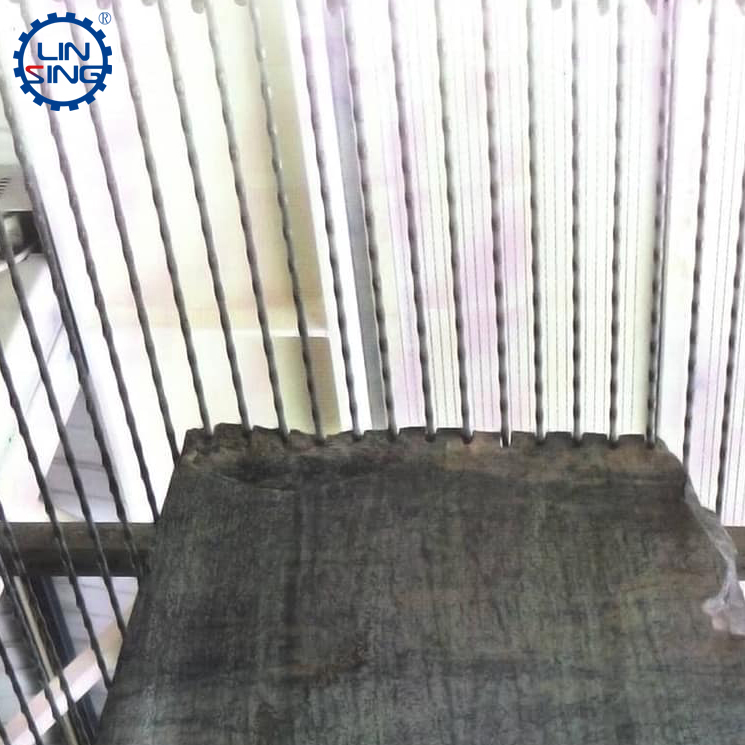
7: Rolling burrs and sandblasting
The sintered hair teeth first need to be deburred by a deburring machine, and then be sandblasted to remove the oxide film and graphite residue on the surface of the beads, which is convenient for quality inspectors to detect. Bead detection items include: size (outer diameter and height), appearance (with or without cracked matrix, fetal tumor, matrix deformation, etc.). For the hair teeth with good carcass appearance but high height, re-burning treatment is required.
8: Reaming and tapping
According to the principle of matching the outer diameter of the steel rope and the inner diameter of the base, the sintered teeth that have passed the inspection are subjected to reaming and tapping.
9: Bead cleaning and gluing
The beads after reaming and tapping are first subjected to ultrasonic degreasing treatment, and then washed with clean water to remove the residual cleaning agent and rust inhibitor, and then placed in an oven for drying. The dried beads need to be sandblasted, then ultrasonically cleaned to remove sand powder residues, then dehydrated with acetone, and then dried.
10: Measuring rope and beading
Measure the steel wire according to the production order arrangement, and then count the number of beads for beading.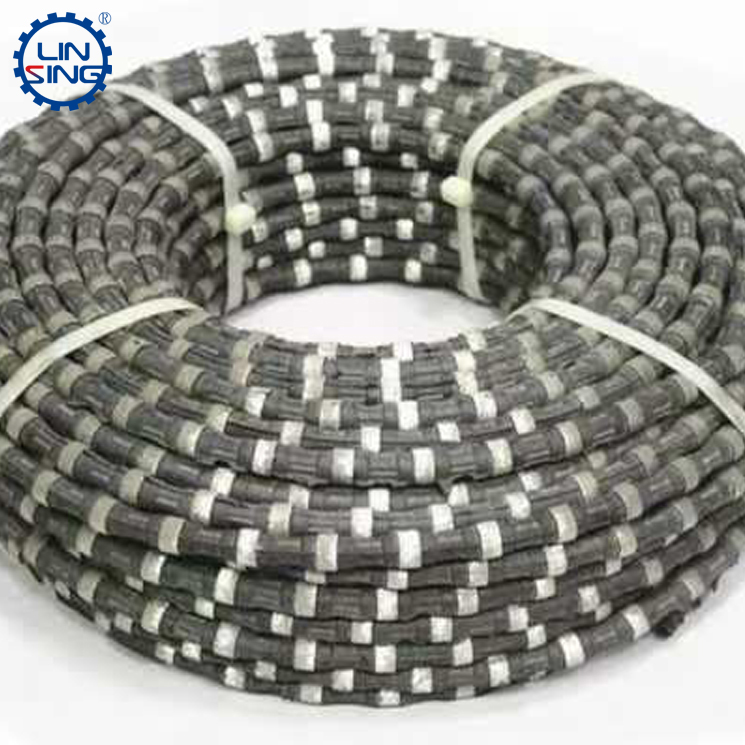
11: Injection plastic and injection glue
Replace the injection mold or plastic injection mold required by the order, and then wind the steel rope completed by beading on the rope storage mechanism, and then use hydraulic clamps to form a closed loop, open the tensioning system, and call out the adaptation process for injection molding or plastic injection.
12: Edge and Inspection
The rope after injection molding or glue injection is processed by the edger to make the diamond exposed; and then the quality inspection personnel conduct final inspection.
13: Pack and store
The finished wire saws that have passed the inspection are sealed and packaged, and then placed in a dry place away from light.




